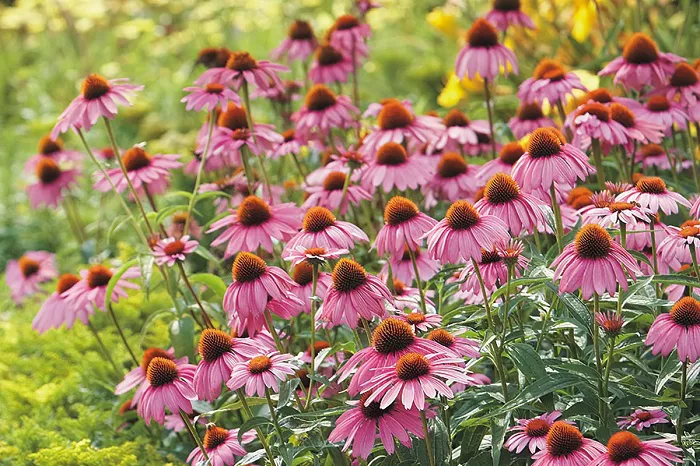Purple coneflowers, with their vibrant hues and hardy nature, are a delightful addition to any garden. These flowers not only add beauty but also attract pollinators like bees and butterflies. Planting purple coneflower seeds is a rewarding process that can bring life and color to your outdoor space. Whether you are an experienced gardener or a beginner, this guide will walk you through the steps to successfully grow these stunning flowers from seed.
Preparing for Planting
Choosing the Right Seeds
When it comes to planting purple coneflowers, selecting high-quality seeds is crucial. Look for seeds from reputable suppliers to ensure they are viable and free from disease. There are several cultivars available, each with its own unique characteristics. Some popular varieties include “Magnus” and “White Swan.” Consider the specific needs of your garden and choose seeds that will thrive in your climate and soil conditions.
Selecting the Perfect Spot
Purple coneflowers thrive in full sun, so choose a location that receives at least six hours of direct sunlight each day. They are also adaptable to various soil types, but well-drained soil is ideal. Avoid areas where water tends to pool, as this can lead to root rot. Additionally, consider the mature size of the plants when selecting your planting spot, ensuring they have enough space to grow without overcrowding.
Soil Preparation
Before planting, it’s essential to prepare the soil properly. Start by removing any weeds or debris from the area. Loosen the soil to a depth of about 12 inches using a garden fork or tiller. This will help improve soil aeration and drainage. Adding organic matter, such as compost or well-rotted manure, can enhance soil fertility and structure. Mix the organic matter thoroughly into the soil to ensure even distribution.
Planting the Seeds
When to Plant
The timing of planting purple coneflower seeds is important for their success. In most regions, it’s best to plant the seeds in early spring, after the last frost date. This allows the seeds to germinate and establish themselves before the heat of summer. However, if you live in a warmer climate, you can also plant in late fall. The seeds will overwinter and germinate in the spring.
Planting Depth and Spacing
Planting depth and spacing are critical factors for the healthy growth of purple coneflowers. Sow the seeds about 1/4 inch deep in the soil. Space the seeds approximately 12 to 18 inches apart to give the plants room to grow. If you are planting in rows, leave about 24 inches between rows to ensure good air circulation and access for maintenance.
Watering and Mulching
After planting the seeds, water the soil gently but thoroughly. Keep the soil consistently moist but not waterlogged during the germination period. This usually takes about 10 to 21 days. Once the seedlings have emerged, you can reduce watering frequency. Applying a layer of mulch around the plants can help retain soil moisture, suppress weeds, and regulate soil temperature.
Caring for Your Purple Coneflowers
Watering and Fertilizing
Purple coneflowers are relatively drought-tolerant once established, but they still need regular watering during their first growing season. Water deeply once a week, allowing the soil to dry out slightly between waterings. Avoid overhead watering, as this can lead to fungal diseases. Fertilize the plants sparingly, using a balanced, slow-release fertilizer in early spring. Over-fertilization can result in weak, leggy growth.
Pruning and Deadheading
Pruning and deadheading are essential practices for maintaining the health and appearance of your purple coneflowers. Remove any dead or damaged foliage throughout the growing season. Deadheading spent blooms will encourage the plants to produce more flowers. Simply pinch or cut off the spent flower heads just above a leaf node. This will also help prevent the plants from self-seeding excessively.
Pest and Disease Management
While purple coneflowers are generally hardy, they can still be susceptible to pests and diseases. Keep an eye out for aphids, which can be controlled with insecticidal soap. Powdery mildew is a common fungal disease that can affect these plants, especially in humid conditions. Ensure good air circulation around the plants and avoid overhead watering to minimize the risk. If necessary, treat with a fungicide.
Harvesting and Propagation
Harvesting Seeds
If you want to save seeds for future planting, allow some of the flower heads to mature and dry on the plant. Once the seeds are fully developed, usually in late summer or early fall, you can harvest them. Remove the seed heads and place them in a paper bag. Allow them to dry for a few weeks in a well-ventilated area. Then, separate the seeds from the chaff and store them in a cool, dry place until you are ready to plant.
Propagation Methods
Purple coneflowers can also be propagated through division. This is best done in early spring or fall. Dig up the entire plant and carefully separate the root clumps into smaller sections, each with several healthy shoots. Replant the divisions in prepared soil and water them well. This method not only helps to rejuvenate the plants but also increases your stock of these beautiful flowers.
Conclusion
Planting purple coneflower seeds can be a rewarding and enjoyable experience for any gardener. With proper preparation, care, and attention, these hardy and beautiful flowers will thrive in your garden. From selecting the right seeds and preparing the soil to caring for the plants and harvesting seeds, each step contributes to the successful growth of these vibrant blooms. Whether you are adding them to a flower bed or creating a wildflower meadow, purple coneflowers are sure to bring joy and beauty to your outdoor space.


